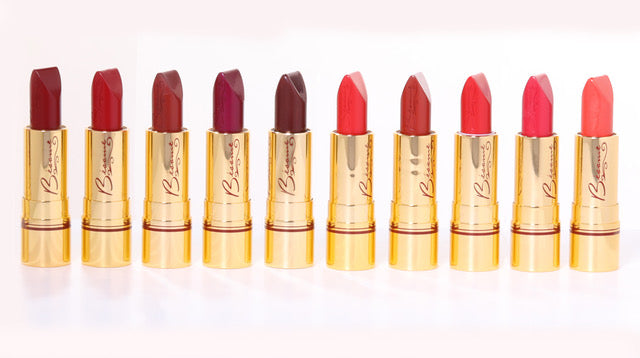Blog
Finding 2025’s Best Red Light Therapy Masks & LED Masks

Many board-certified dermatologists, including Geeta Yadav, MD, a board-certified dermatologist in Toronto, recommend this rechargeable device for its collagen-boosting (and, therefore, firming) abilities and light offerings. “Light therapy, specifically a device that uses both red and infrared light, is the easiest way to promote collagen production at home,” she says. “It combines infrared and two forms of red light, as well as amber and blue light for comprehensive treatment of signs of aging, redness, and acne.” The hands-free, cordless design—which stays put via an adjustable head strap—combined with a short, three-minute treatment makes it convenient to work into your daily routine.
“When I started using the Dr. Dennis Gross Skincare DRx SpectraLite FaceWare Pro about six months ago, I didn’t have high hopes because, to me, topical treatments can do way more way faster than LED lights—but boy, was I wrong. Since I’ve started, I’ve seen improvement in the elasticity in my skin (thanks to the blue light) and the acne flare-ups I’m prone to (shoutout to the red light). The device even offers purple light therapy, a combination of both lights, to tackle wrinkles and pimples.” —Angela Trakoshis, former shopping market editor
- Skin it’s best for: all
- Use time: 3 minutes
- Power source: wireless
- Auto-shut off?: yes
- Product highlights: FDA-cleared, three treatment modes, adjustable head strap
Best Massaging: TheraBody TheraFace Mask
Why it’s worth it: TheraBody is known for its percussion-powered massage guns, which knead and melt tension in your muscles, so it’s little surprise that the brand would apply the same benefits to the TheraFace Mask. Along with 648 LED lights total that emit red, infrared, and blue light, this device employs a subtle vibration to massage pressure points on the scalp and face, reduce stress, and enhance circulation. Depending on the setting you choose, the treatment can last anywhere from three to nine minutes. For a more concentrated treatment—or if you want something a step up from vibrations—try the TheraFace Pro, which offers microcurrent, percussive therapy, and LED light attachments.
Tester feedback from commerce editor Sarah Han
“The vibrations are my favorite feature and really make this device stand out—there’s nothing like a 10-minute head massage to wind down after a long day of staring at screens. I’m bad at consistently using devices but always find an excuse to use my TheraFace. I also really like the protective eye shields because they feel like added protection against the lights—so I feel better scrolling on TikTok while the mask does all of the work.” —Sarah Han, commerce editor
- Skin it’s best for: all
- Use time: 3 or 9 minutes
- Power source: wireless
- Auto-shut off?: yes
- Product highlights: FDA cleared, LED-only or LED + Vibration, three vibration modes (Continuous, Breathing, and Wave), 17 proprietary QX-Micro Motors, removable protective eye shields (medical grade silicone), storage stand
Most Lightweight: HigherDose Red Light Face Mask
Why it’s worth it: Unlike other LED light therapy devices, the HigherDose Red Light Face Mask pairs red LED light therapy with near-infrared light to reduce redness and pigmentation, stimulate collagen production, minimize the appearance of fine lines, encourage healing, and even boost your mood. (Think of it as sunlight, but without the heat or UV radiation.) The medical-grade silicone design is easy to clean, and you can choose between a 10-minute treatment or 20-minute session. Use this before applying sunscreen in the morning or after cleansing your skin before bed, since SPF can prevent the light from delivering results.
“I like how flexible and lightweight it is compared to TheraFace—if I need to do chores around the apartment, I’ll slide this on and get to work. The back straps are super sturdy and ensure everything stays in place without tugging on my skin or hair. I also like that there are 10- and 20-minute modes—if I’ve had a particularly stressful day, I’ll go up to 20 minutes, and I notice my skin looks less dull after the longer session.” —Sarah Han, commerce editor
- Skin it’s best for: all, especially mature or dull
- Use time: 10 or 20 minutes
- Power source: wireless
- Auto-shut off?: yes
- Product highlights: two programming options, medical-grade silicone
Best for Eyes: Currentbody LED Eye Perfector
Why it’s worth it: Clocking in at a mere three minutes per treatment, Currentbody’s LED Eye Perfector is your shortcut to less defined 11 lines, brow furrows, or crow’s feet—or if you don’t care for a full-face design. This compact device boosts collagen production via four light wavelengths—amber (605 nm), red (633 nm), deep red (660 nm), and near-infrared (830 nm)—to provide its collagen-boosting benefits at different levels of the skin. The brand says you can use up to six times a week so it’s the perfect post-work ritual to refresh and soothe your eyes.
Tester feedback from contributing commerce editor Deanna Pai
“I have a full-face LED mask, but this eye mask is perfect when I don’t have time for a long treatment. In just three minutes, it targets my crows’ feet and brightens my dark circles. Plus, the hands-free design makes it incredibly convenient.”
- Skin it’s best for: all, especially mature
- Use time: 3 minutes
- Power source: wireless
- Auto-shut off?: yes
- Product highlights: four LED wavelengths, device stand
More LED Masks to consider:
- If you’re dealing with breakouts, the Omnilux Mini Blemish Eraser is essentially an LED-powered spot treatment: Its small, compact size allows it to zap acne-causing bacteria and precisely treat inflamed pimples or breakouts. The light therapy device includes both blue and red LED lights, as well as hydrocolloid patches (a.k.a. pimple patches) that grip the device to your skin, making it effectively hands-free. “I like that Omnilux has red light for anti-inflammation and infrared for collagen production,” says David Kim, MD, a board-certified dermatologist at Idriss Dermatology in New York City.
- If you’re looking for a red-light therapy wand, try Solawave 4-in-1 Red Light Therapy Wand (which is also a great budget option). Since the wand is small, it only contains seven bulbs. “It is difficult to quantify the results one can expect from a 7-bulb device, however, it may help,” says Blair Murphy-Rose, MD, FAAD, a New York City-based board-certified dermatologist. “The most important is to be consistent with usage to reap benefits, if any.” But it’s also portable and precise, making it easy to target specific areas like around your eyes and lips.
- Don’t feel like wearing a mask? Invest in a panel like Revive Light Therapy Lux dpl IIa LED Full Face Wrinkle & Acne Treatment Panel, which you can also use to target wrinkles and dark spots on the hands, neck, and chest. You do have to wear goggles over your eyes, but the treatment only takes three minutes—and the panel is easy to use. Just choose your setting (of three), sit back, and relax.
Frequently Asked Questions
How do red light therapy masks work?
A quick intro for those unfamiliar: LED stands for “light emitting diode,” meaning it emits wavelengths of light in the visible spectrum. “At the cellular level, energy from the light gets absorbed by mitochondria,” says Michelle Park, MD, a board-certified dermatologist at Washington Square Dermatology in New York City. Mitochondria, as you may or may not remember from biology class, is the powerhouse of the cell and provides energy to fuel cell functions.
By providing light to the mitochondria, an LED treatment “triggers biochemical reactions that ultimately lead to beneficial effects on the skin, such as fibroblast proliferation and collagen production,” Dr. Park explains. Fibroblasts are cells that produce connective structures like collagen and elastin, which serve as the scaffolding within skin—so increasing their numbers can translate to more of those important fibers and, in turn, smoother, firmer skin.
What are the benefits of red light therapy masks?
It depends on the light color—the most commonly used lights in LED devices are red, infrared (which can’t be detected by the human eye but is felt as heat), and blue. “Red and near-infrared are great for wound healing and increasing collagen production to improve skin texture, tone, and firmness,” says Dr. Park, who notes that those with rosacea and redness may also take advantage of their anti-inflammatory properties. Meanwhile, “blue light is used for acne, as it targets the bacteria that causes acne,” Dr. Park notes.
What are the different types of LED Lights?
“[Red light therapy can] stimulate collagen production, reduce inflammation, and increase blood circulation, so it is primarily used for [fine lines and wrinkles] and wound healing,” Sejal Shah, MD, a board-certified dermatologist based in New York City, previously told Allure. (In other words, it’s ideal for addressing signs of sun damage.)
Blue LED lights, meanwhile, are often used as an in-office acne treatment, as they’re able to kill the bacteria on breakout-prone skin types. Green light can address hyperpigmentation and dark spots as well as brighten skin. While there are other lesser-known LED light colors, such as yellow and purple, red and blue LED are backed up by clinical studies, which is why you can often find them alone or even paired together in these beauty tools.
How often should you use a LED mask?
Your LED device will come with a recommendation for how long (and how often) to use it to see and maintain results. Generally speaking, though, Dr. Park says that you can usually notice a difference if you use your device three to five times a week for 10 minutes at a time. But again, she says, “You should check the manufacturer’s recommended usage of your particular model.”
Who should avoid using LED lights?
People with heart disease and those who are pregnant and breastfeeding should check with their doctor before using at-home skin-care devices, LED lights included. And for LED light devices in particular, you should skip them if you have “a seizure disorder, epilepsy, or a condition that causes sensitivity to light like lupus or migraines triggered by light,” says Dr. Park. She also recommends passing on them if you take a photosensitizing medication like doxycycline or isotretinoin, both of which can be prescribed for acne.
Otherwise, these gadgets don’t have serious side effects. In fact, many have been FDA-cleared; rather than FDA-approved, FDA clearance means they’re similar enough in terms of safety and efficacy to previously approved devices.
Meet the dermatologists
- Geeta Yadav, MD, a board-certified dermatologist in Toronto
- Michelle Park, MD, is a board-certified dermatologist at Washington Square Dermatology in New York City.
- Sejal Shah, MD, is a board-certified dermatologist at SmarterSkin Dermatology in New York City.
- David Kim, MD, is a board-certified dermatologist at Idriss Dermatology in New York City and founder of Lightsaver.
How we test and review products
When Allure tests a product, our editors look at it from every angle in an effort to best serve you. We are particularly discerning when writing about skin-care devices. This is because of the increased risks and, in many cases, the high price points, that accompany at-home dermatological tools and devices.












